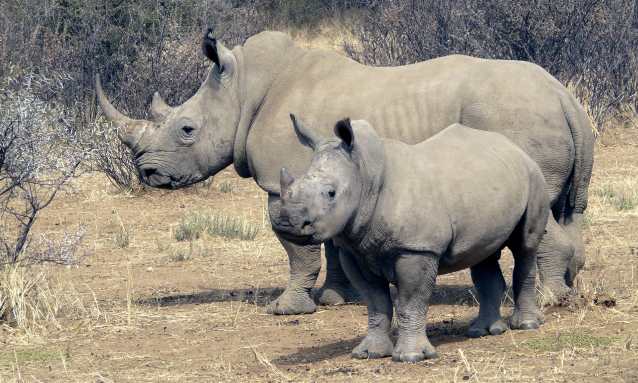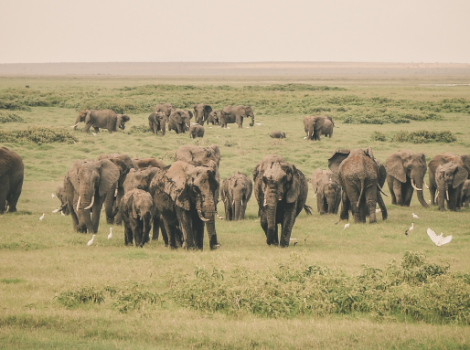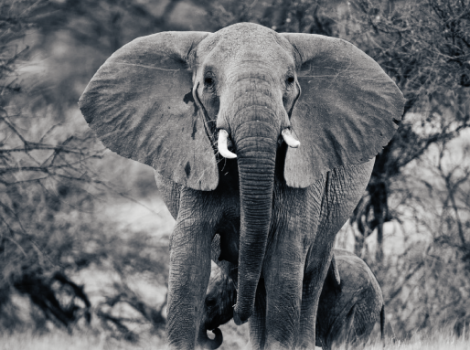
Rhino carcasses are piling up, suggesting that Botswana is on the losing end of the protracted war against poachers. Sunday Standard says it has turned up information on a recent incident involving four rhinos that were dehorned on the NG30 along the Okavango Delta. The decision by the Government to dehorn rhinos as a deterrent against poaching has not put off the relentless poachers, who are reported to be going for the little stubs left on the animals and the buds on rhino calves.
While the Botswana Defense Force (BDF) has boasted small victories in killing poachers, Botswana has been burying more rhino carcasses than poachers’ corpses over the past three years. According to the Sunday Standard, sources close to the rhino massacre insist that it is an inside job.
“Imagine yourself a rhino poacher. Your boss gives you money to set off – but the destination is not terra incognita (unknown territory). The ground is prepared by informants. How else would you possibly find a rhino in the bush to kill,” a source reportedly told Sunday Standard.
This relates to reports that some of the biggest culprits in rhino poaching are game guides. They are the ones who provide all the crucial information to the poachers, Sunday Standard has allegedly learnt. It remains a major problem the Botswana Government needs to address if it’s to stay ahead of the poachers. Sunday Standard claims efforts to get information from the Department of Wildlife and National Parks (DWNP) on various sightings of dehorned rhino carcasses hit a dead end as the department says it doesn’t deal with inquiries on a case by case basis.
Almost 100 rhinos have been poached in the three years since the disarmament of the anti-poaching unit. This constitutes a 100% increase in poaching incidents when compared to the one rhino poached in the previous three years (2015, 2016, and 2017) when the unit had firearms.
At least 12 rhinos were poached in 2018, 29 in 2019, and at least 50 by the end of 2020. The war on poachers has since been led by the army BDF, who killed over 20 poachers in 2020 alone.
The Minister of Tourism, Philda Kereng said efforts were underway to address the legislative gaps that she said have constrained the (anti-poaching) unit to carry semi-automatic needed to carry out their duties. She said her Ministry was aware of the need to adequately resource the anti-poaching Unit but would wait to table proposed legislation at a later stage. This was despite evidence that legislation already exists that empowers the Unit to carry the necessary weapons.
“Where it is necessary for the discharge of his duties or the exercise of his powers under this Act, and notwithstanding the provisions of the Arms and Ammunition Act, a wildlife officer may carry a firearm with him, even on land of which he is not the owner, for the protection of himself or any other person, the prevention or investigation of offences against this Act, or the arrest of any person committing or suspected of committing an offence under this Act, and where the Director so directs, such firearm may be of a type not otherwise permitted under the Arms and Ammunition Act,” Section 73 (3) of the Wildlife Conservation and National Parks Act which reads.
The DWNP has said both white rhino and black rhinos have been severely affected, making it necessary to implement critical and impactful interventions to arrest the situation.
Source: http://www.sundaystandard.info/is-botswana-losing-the-war-against-rhino-poaching/



